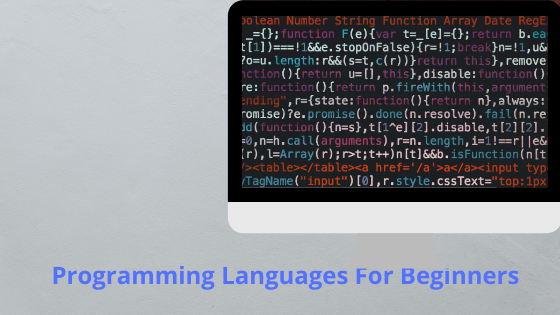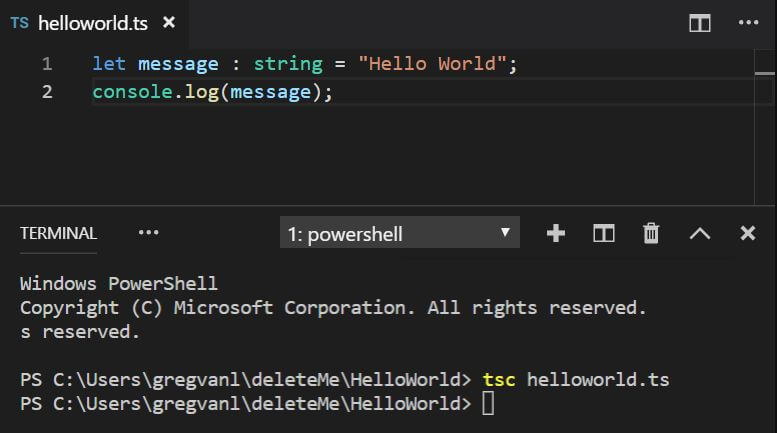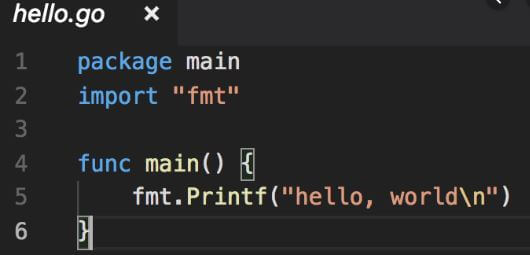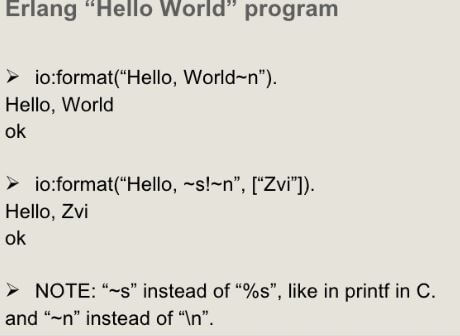The latest advancements in technology, the multitude of tech startups, and customers’ need to digitalize their lives have led to an ever-increasing need for software developers.
If we’d take the United States as an example, according to statistics, there are more than 200.000 open software developer jobs, meanwhile, the colleges are only able to deliver roughly 30.000 per year. Also, in 2020, it is estimated that there will be 1 million unfilled computer programming jobs.
This means that companies need to turn to the ‘not-so-traditional’ candidates in order to fill this gap. If you are reading this article, you are finding yourself in this situation. You might’ve studied economics, tourism, or any other non-tech industry during college, but now you feel like you should get aboard and start your software developer career.
From not Knowing Anything About programming to Landing Your First Job.
Before we even start talking about the programming languages you should learn, we should definitely talk about how you can make this career switch.
Career Tips for Coder
● Duration
Making a career switch it’s not very easy. Making a career switch and becoming a developer is harder. If you are looking to make this switch, the entire process, from newbie to valid candidate for a job or internship, should take you around 4 to 6 months.
In terms of commitment, you should learn for roughly 20 hours per week. That’s 4 hours during each working day. Remember it is very important that you are not tired when you do learn. You can’t start studying after a 12-hour shift, you just waste your time.
● What do you have to do?
If you are thinking about this change, you should read this article about the programming language you should learn. Then, after you chose one, be it JavaScript, Java, PHP, you should buy an online course from platforms, such as Udemy. You don’t have to invest too much, $20 tops to buy one course. Go through it and see if you really like programming. If you enjoy it, then you should enroll in a full-time developer course.
● The process
If you want to study, then you should definitely get a part-time job and, during these 6 months, you should tap into your rainy days’ account. What’s the worst thing that could happen? You fail and you go full-time after 6 months. But, if you’ve come this far, you’ve already enrolled in a course, you won’t fail because you have the right mentality and you are ambitious.
Now that we talked a little about the career switch process, it’s time to talk about the programming languages you should look into.
These programming languages are split into two major classes. The first one, frontend programming languages, refers to the ones that developers use to make the visible part of the website. This page that you are on right now was made by a frontend developer. The second one, backend programming languages, refers to the ones used by developers to create the application logic. They create a connection between this page and the database.
Now, let’s take a look at the top 10 programming languages a beginner should choose from when making this career switch.
Best Programming Languages to Learn in 2020
● Frontend
1. HTML
HTML, abbreviation from HyperText Markup Language is one of the most basic programming languages. It is used to create the structure of a page. It comprises of elements called tags, which are used to tell the browser how it should render your entire page.
For example, a tag like this
will let the browser know that you want it to render a paragraph.
If you are using a tag like this <input type=’text /> you are basically telling the browser “Hey, I want you to render an element where the user can input text”.
If you are looking to become a frontend developer, HTML is the first language you should learn.
Read: 5 Advantages of Building a Website on HTML5
2. CSS
Now that you’ve learned HTML and you created a basic structure for your website, it’s time to add a dash of friendliness to it.
CSS, abbreviation from Cascading Style Sheets, is used by frontend developer to create a website’s design.
We’ve created a paragraph, but we also want to change the text color to gray, and the background color to red. That input should have a blue border and it should be 20 pixels below the paragraph. All this is done using CSS.
If HTML and CSS would be elements of a sentence, the HTML would be a noun and the CSS would be an adjective.
3. JavaScript
According to statistics offered by Github, JavaScript is, by far, the most popular language out there. What JavaScript does, it connects with the existing HTML and CSS from your website and adds interactivity to it.
If you want to create a pop-up on your website, you need JavaScript. If you want to send information to your backend when the user presses a certain button, you need JavaScript.
Basically, everything that’s dynamic it’s being done in JavaScript. Also, another cool feature is that, once you learn this language, you will able to create backend applications, also.
As we already said, HTML is the noun, CSS is the adjective, and JavaScript is the verb. You need to learn all three of them in order to be able to ‘speak’ the frontend programmers’ language. One or two of them won’t be enough, so get going!
Learn More: List of Most Popular JavaScript Frameworks to Learn in 2019
4. TypeScript
You should think of TypeScript as JavaScript with some extra features. It’s still JavaScript, but each type of data should be predefined by the developer.
For example, if you have a function that sums two numbers, in JavaScript it would be something like this, Sum (a,b). In this scenario, you could also do something like this, Sum (2, ‘abc’). The function would still run, but it would fail, as you added a string instead of a number.
In TypeScript, you would have to define the function like this TypeScriptSum(a: number, b: number). Now, if you’d call the function like this TypeScriptSum(2, ‘abc’), it wouldn’t run and it would tell you that you need to use two numbers, strings are not allowed.
Once you know JavaScript, it is very easy to learn TypeScript, as the only difference between the two of them is the fact that you always have to define the type of your variables.
● Backend
5. Python
Python is the third most popular programming language on Github, right behind JavaScript and Java. It is a very basic programming language, one of the easiest ones used to create backend applications. Invented in 1991, during the past years it has become very popular due to the rich environment of libraries which can be used and to its active online community.
Keep Learning: Java vs. Python: Which Programming Language is Best?
These days, Python is largely used in applications focused on Artificial Intelligence, Machine Learning, and application which digest large amounts of data.
If you are looking to learn backend, then Python is a programming language you should definitely look into. Here [udemy] are a few online courses you could choose from.
6. Java
First, we should highlight the fact that Java is NOT JavaScript. Even though their names are similar, you shouldn’t get confused. Even so, you could create a Java backend application that serves a JavaScript frontend application.
Launched in 1995, this programming language is the second most popular programming language out there, according to Github. It is mainly used for enterprise applications.
Chances are, your banks or your insurer’s application is written in Java. If you are into this type of application, you should definitely start learning Java.
Keep Learning: Python vs Java: Which one is the Best Programming Language
7. PHP
The name PHP is the abbreviation for Personal Home Page. Launched in 1995, as the name suggests, its purpose was too invented to help developers create websites and web applications. Unlike Python or Java, for example, by using PHP you can create both backend applications and frontend applications.
Learn More: Growth of PHP based Websites
Since its launch, it has become very popular because it’s an open-source programming language, it has lots of libraries and frameworks at your disposal and the community around this programming language. Chances are, any issue you encounter while learning this language will have a fix somewhere online. You are just one Google search away from fixing your bug or issue.
8. Golang
Developed by Google, the ‘Google Language’, is a programming language very similar to Python, so if you are into Python, you will definitely be into Golang, also.
The fact that is statically typed (see TypeScript example), its high compilation and execution speed, and its adaptability are some of the main benefits of this programming language.
Also, it is developed by Google, thus it is constantly evolving in accordance to tech needs, and you can get a lot of information from the community around it. So, would you like to Go Lang?
9. Ruby
Created in 1990, in Japan, Ruby is an open-source programming language focusing on simplicity and efficiency. It is meant to be as easy as possible, so developers can learn it easily. Also, it is meant to be as efficient as possible, so developers using it can deliver their tasks as fast as possible.
Even though is not as popular as Java or Python for example, in the United States alone, there are more than 3.700 Ruby developer jobs available. If you are looking to master Ruby, at least one of those can be yours.
10. Erlang
Erlang is a very popular language among companies that deliver telecommunication systems, servers for internet applications, telecommunication applications, and database applications.
It is a general-purpose programming language and runtime environment. Some of its benefits would be its support for fault tolerance, distribution, and concurrency.
Companies, such as Ericcson use this programming language when building their telecommunication systems and applications.
Conclusion
Now that you’ve decided you want to become a software developer, it’s really important that you do some digging and find out what are you looking to become. Would you like to become a frontend developer or a backend developer? If you are looking to become a backend developer, which programming language you think will suit you best?
Keep Learning: Best 10 Free Mobile Apps to Learn Programming Languages
You are about to take a very important step in your career, make sure you know you have all the details before making a decision.
Recommended Articles
Django vs Node.js: A Detailed Comparison, Pros, and Cons
Which Framework will give your Mobile App the top spot? Angular Vs React










